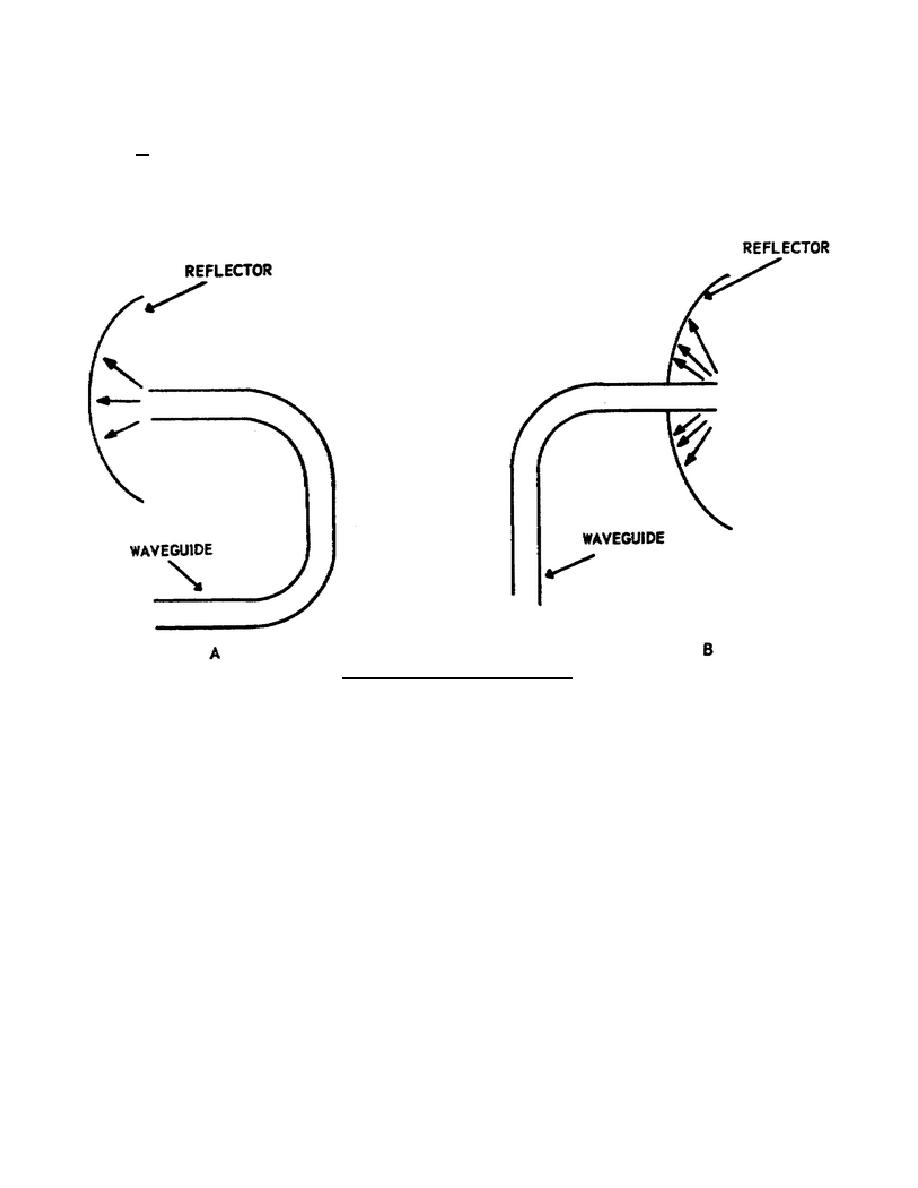
the energy into a narrow beam is a paraboloid. The focal point and the contour of the reflector determine the size
of the reflected beam. The paraboloid reflector is often called a parabolic reflector.
b. The parabolic reflector on a reflector-type antenna system may be fed by a front- or rear-feed system.
In a front-feed system the waveguide is curved around the edge of the reflector and then curved again so that the
waveguide opening faces the reflector, as shown in A of figure 98. In a rear-feed system, the waveguide passes
through the reflector from the back side as shown in B of figure 98.
Figure 98. Reflector feed systems.
2-28.
CASSEGRAINIAN ANTENNA
A cassegrainian antenna is a rear-fed antenna which uses two reflectors to concentrate the electromagnetic
energy into a narrow beam. The antenna system is composed of a feed system, a hyperboloidal reflecting surface
(also called a hyperbolic reflector), and a parabolic reflecting surface, as shown in figure 99. The waveguide horn
illuminates the hyperbolic subreflector which, in turn, illuminates the main parabolic reflector. Use of the
hyperboloid insures a more uniform illumination of the main paraboloid.
2-29.
POLYROD ANTENNA
A polyrod antenna is an end-fed directional dielectric antenna that consists of a long, tapered rod
energized by a section of waveguide. A dielectric material such as polystyrene is used to construct the rod. The
dielectric rod guides the electromagnetic waves in the direction of the rod's axis. The polyrod antenna may be
used alone, as shown in figure 100, or it may be used with conventional reflectors.
344 L2
92


 Previous Page
Previous Page
